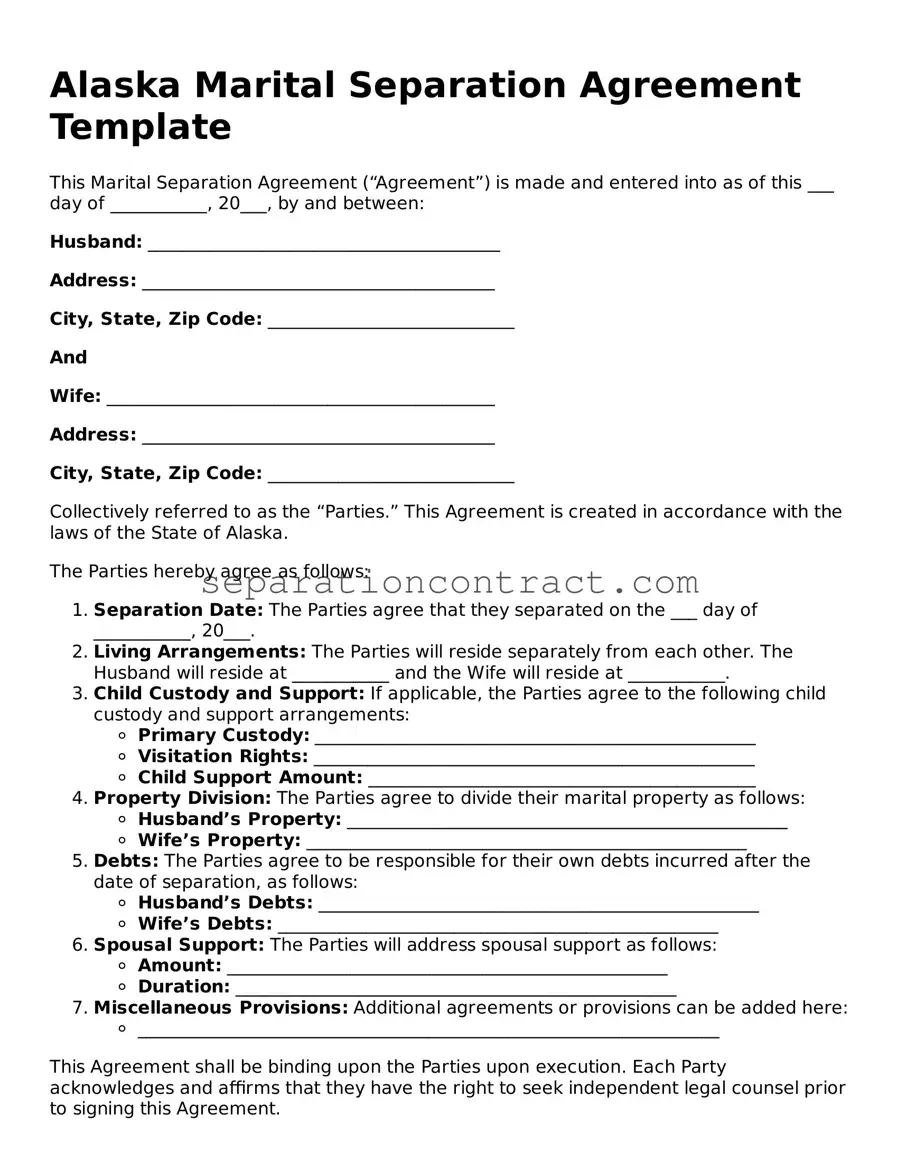Valid Marital Separation Agreement Form for the State of Alaska
The Alaska Marital Separation Agreement is a legal document that outlines the terms of separation between spouses, addressing issues such as asset division, child custody, and support obligations. This form serves as a crucial tool for couples who wish to formalize their separation while avoiding the complexities of divorce. To ensure your rights and responsibilities are clearly defined, consider filling out the form by clicking the button below.
Fill Out Your Form Online
